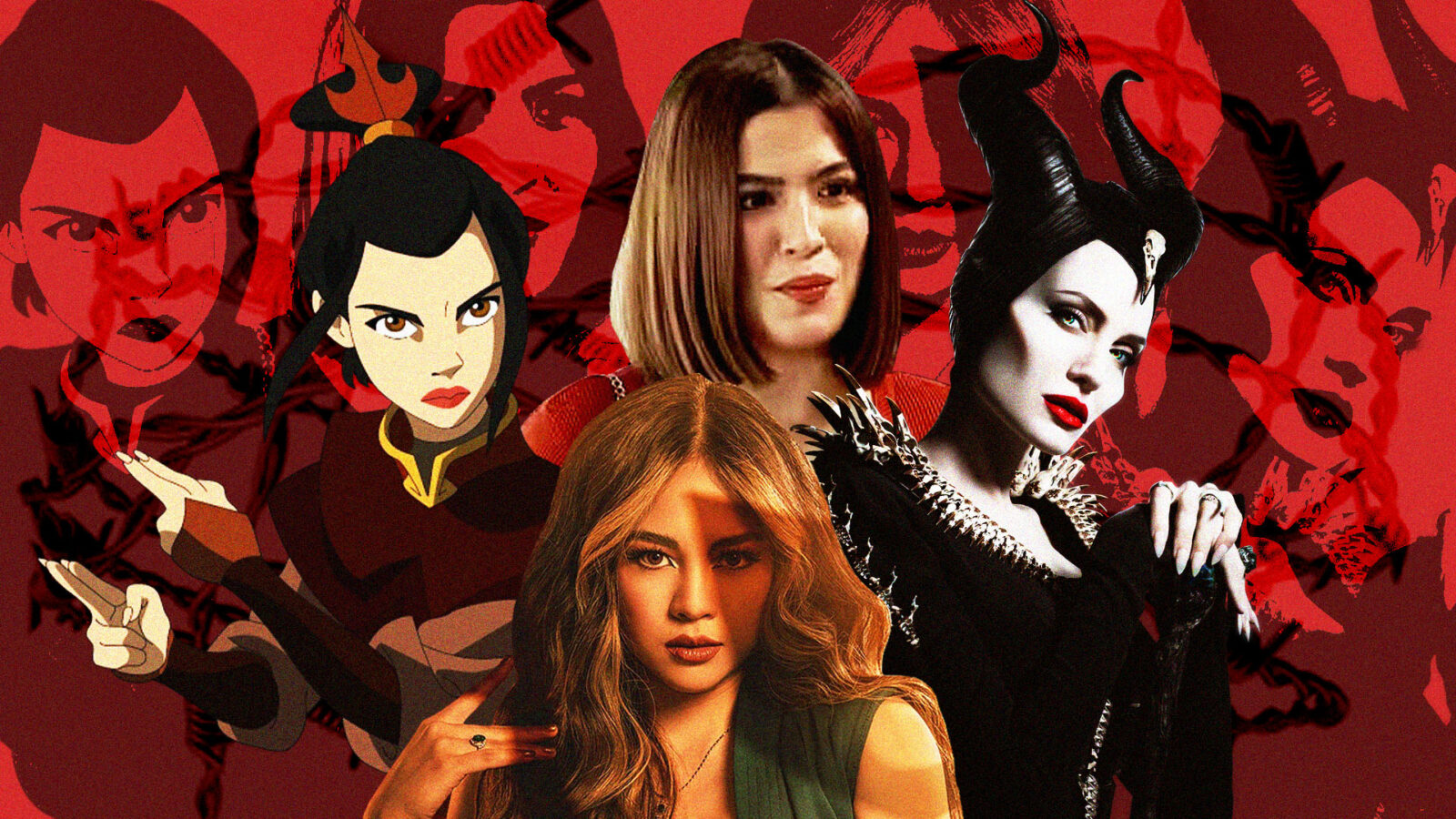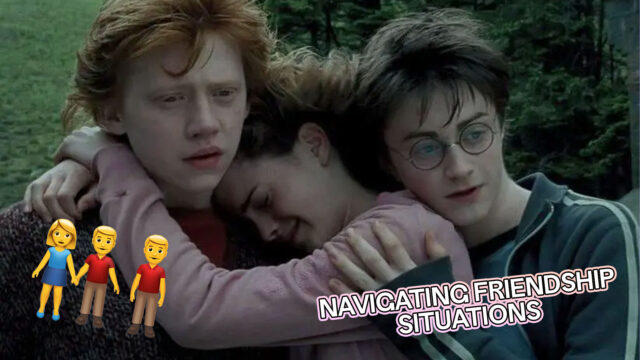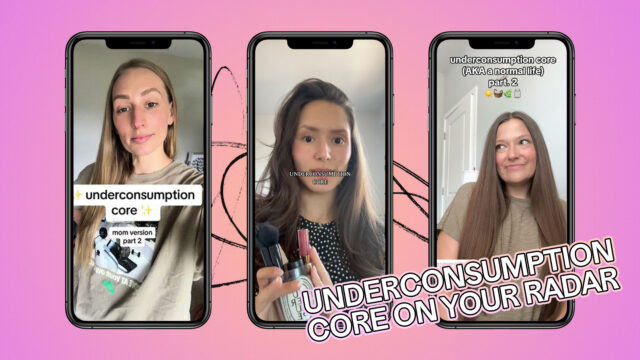These days, thankfully, we’re seeing more and more complex female villains and antagonists in TV and film. Why do we love them so much?
Related: 7 Kontrabidas We Love To Hate (And Sometimes, Just Love)
First things first, here’s a challenge: name a female antagonist. Pretty easy, right? Now name a female antagonist that 1) is from a Filipino production, 2) is not driven by her desire or love for a man, and 3) has understandable motivations. Crickets, to many. Is it because they’re not being created or is it because they don’t get as much visibility?
No matter how people try to convince us things are far more equal now in the media industry, even on screen, women aren’t as widely or diversely represented as they could be. What more behind the scenes? What more in real life outside of media? So it’s refreshing to watch women of diverse skills, personalities, motivations, and characteristics star in stories—whether or not they’re the “hero.”
It’s far more cool (and progressive) that girls and women are being portrayed in a variety of different ways than if they were always portrayed as one or two things—because women are just as complex and multilayered as the thousands of diverse male heroes and villains we’ve come to see.
We love our Amy Dunnes and our Harley Quinns and our Valentinas and drink-throwing Lavinia Arguelles for many different reasons. We enjoy both the unapologetic savagery of some deliciously vicious kontrabidas, as well as antagonists’ moments of vulnerability, when they show us they’re perhaps not pure evil. Let’s take a quick dive into why.
COMPLEXITY IS FAR MORE INTERESTING
Honestly, though iconic, one-note female villains that are pure evil and serve only to make the protagonist look good is the go-to take—and it gets tiring to see sometimes. So when something new and unique, is added to their portrayal, it’s refreshing to watch.
Whether it’s the juxtaposition of their duality (literally) á la Regina/Valentina (Janella Salvador) in Darna (2022) or the revelation of a dreadful backstory akin to that of Z (Daniella Stranner) in Senior High (2023-2024), a complexity that humanizes a character is ever-so welcome. It adds to the drama. The intrigue, the unpredictability, the layers of conflict, the potential social commentary—they can all make a story better.
DEPTH IS MEANINGFUL—AND RELATABLE
It’s a testament to great writing and characterization when you find yourself sympathetic to a female antagonist—or even when you find yourself questioning the actions and decisions of the protagonist.
The more muddled the line between good and bad is, not only is it more entertaining, it’s way more realistic. Not that realism is what makes a piece of media good, but it makes it more understandable. It also gets us to exercise our critical thinking, which is necessary when consuming media.
Take Avatar: The Legend of Aang’s Azula, for example. She’s spectacularly manipulative and cruel—to some, pure evil. But if you watch the whole series, and really try to peel back her layers, you find a young girl tragically shaped by the people and forces that raised her. Similarly, Luna (Alexa Ilacad) from The Killer Bride (2019) and Sylvia (Kaila Estrada) from Linlang (2023) are confrontational and prone to harsh outbursts targeted to the protagonists. But throughout their respective series, you get to understand why they are the way they are.
Some of these villains even get redemption arcs, an effort from creators to show one of life’s most important lessons to learn but one of the most difficult to keep believing: that people can change.
PEOPLE ARE DIVERSE—AND STORIES SHOULD BE, TOO
The semantic relation between female villains and sexuality is a topic for another day. But notice how most female villains are contrasted to their protagonist counterparts in terms of clothing, makeup, and presentation? While familiar characteristics do help us identify certain kinds of people, we can’t rely on stereotypes.
Audiences are perfectly capable of understanding the antagonistic relationship between a “hero” and their “villain” even without the tried-and-true “evil baddie” characteristics—if creators strive to communicate it well. Multifaceted characters make a story that much richer. It’s great that characters and stories are becoming more diverse both internationally and locally, mirroring our own complex reality.
But of course, we do enjoy the occasional portrayal of pure evil, chaos incarnate villainesses—because why not? Diversity means diversity, so women that are simply driven by inciting chaos are also welcome to join the party. Especially since another stereotype of a female villain involves their motivations—which often involve a desire for love, a loyalty to a man, or plain old revenge. So some people want to see something different!
And also because yes, women can be bad, too. We’re all just human, driven by our own desires. And there’s enough space in the world to tell these stories that people crave for or resonate with.
THEY CAN TEACH US A THING OR TWO
A general consensus about female villains’ appeal is that they are benchmarks of confidence and unapologetic self-assurance—which isn’t incorrect. There’s a reason why there has been a resurgence of rehabilitating the image of mean girl-antagonists like Sharpay from High School Musical and Regina George from Mean Girls.
People on social media have been saying that they were actually the hero of their respective media and that the real villains were the girls they were put against. And I think that’s crossing the line of their characterization, even if the initial intent was simply to empathize with these characters and admire their tenacity.
While we understand sympathetic antagonists to be the product of how they were raised, for instance, condoning their behavior is an entirely different story. Regina and Sharpay are clearly spoiled, manipulative mean girls that, early on in their storylines, would step on and sabotage people to get what they want. We can praise their confidence or their ambition, but their actions are nothing to emulate.
The thing is, we can enjoy their characters while still acknowledging that the things they did were wrong, petty, or hurtful. In fact, it’s encouraged, because we get to see how they can make mistakes or bad choices and learn from them—and still be the powerful, confident go-getters that they are.
Not every female villain has to be redeemable or sympathetic, nor should they always be the ultimate bad to a hero’s ultimate good. But that’s the whole thing, isn’t it? The diversity and complexity by which we present girls and women on screen is something to champion. And in turn, we get incredible, meaningful stories and characters that will forever reside in our favorites list.
Continue Reading: It’s Not All Evil: Deconstructing The Beauty Of Female Villains





